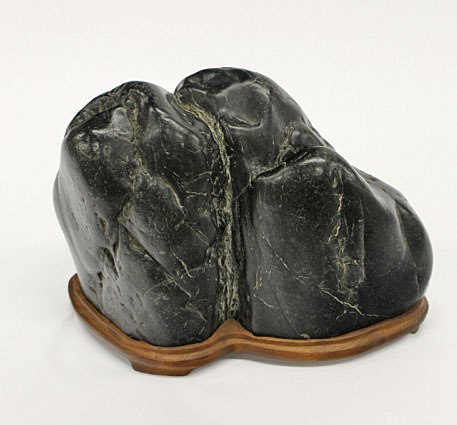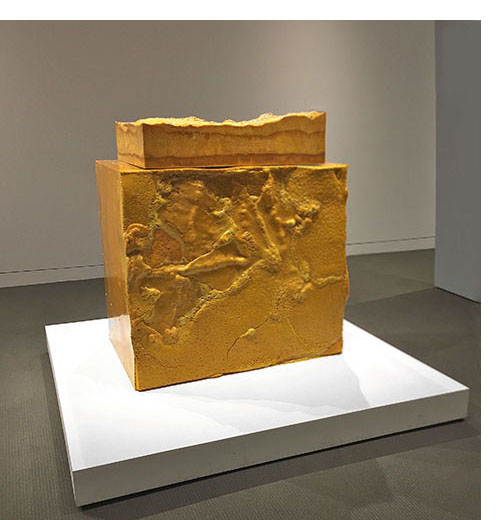 detail.jpg) |
 |
Suiseki are relatively small rocks that are deemed by their finder to be in some way extraordinary. Their shapes may reflect the landscape in which they are found—a mountain, or waterfall—or perhaps evoke an animal. Some are just beautiful forms, but all are as much about the finder’s eye and taste as the chance moment that places such an extraordinary natural creation in the path of the seeker. Plucked from rockfalls or mountain rivers, these mysterious, beautiful creations of nature are displayed, largely unaltered, on specially shaped wooden bases (daiza) or in metal trays.
.jpg) |
For over a decade, Caesar has experimented with a process in which the detritus of his life and studio — garbage and leftover scraps, essentially—are imbedded in a matrix of clear or colored resin. The resulting mixture becomes a new material, which, when cut into rectangular or triangular slices and hung on the wall or presented as freestanding minimalist blocks, evokes mineral or fossil-laden stone. Seen in cross section, the imbedded materials recall objects in the novella Flatland, in which a sphere passing through a plane is visible only as a series of larger and then smaller circles. Close examination reveals some of these objects to be identifiable–the remains of an eviscerated plastic pen barrel, or knitted material. The cloth is coiled in on itself and folded like something vegetal, split and fixed in a way that it could never have been had it not been petrified into its present shape.
 |
breaking through to its surface, looks good enough to eat. It has no title, but on its card this text appears: “I call this stone Jasper, and think of it as a sunset. I also think of cutting it up into little pieces and serving it for dessert.”